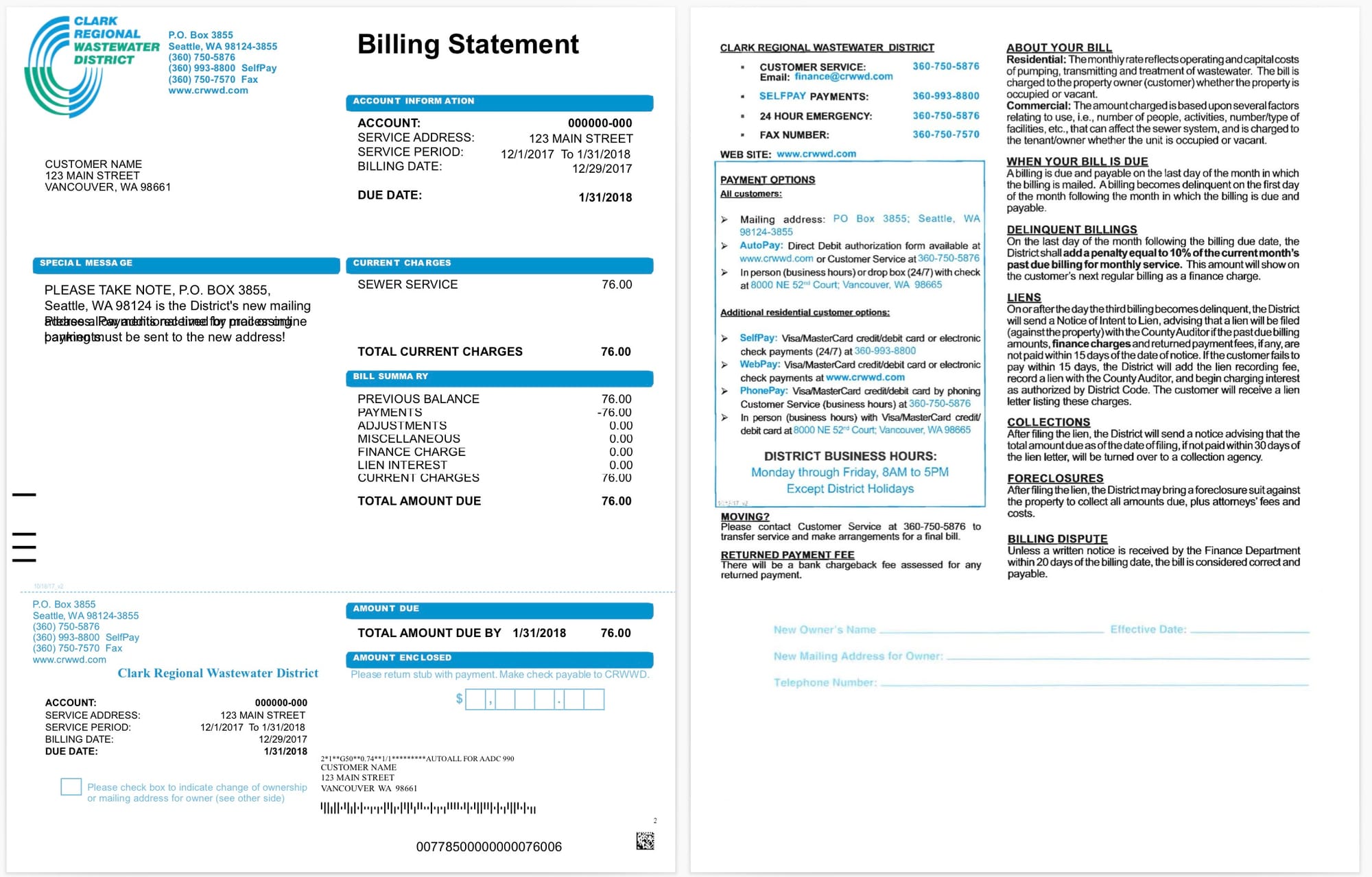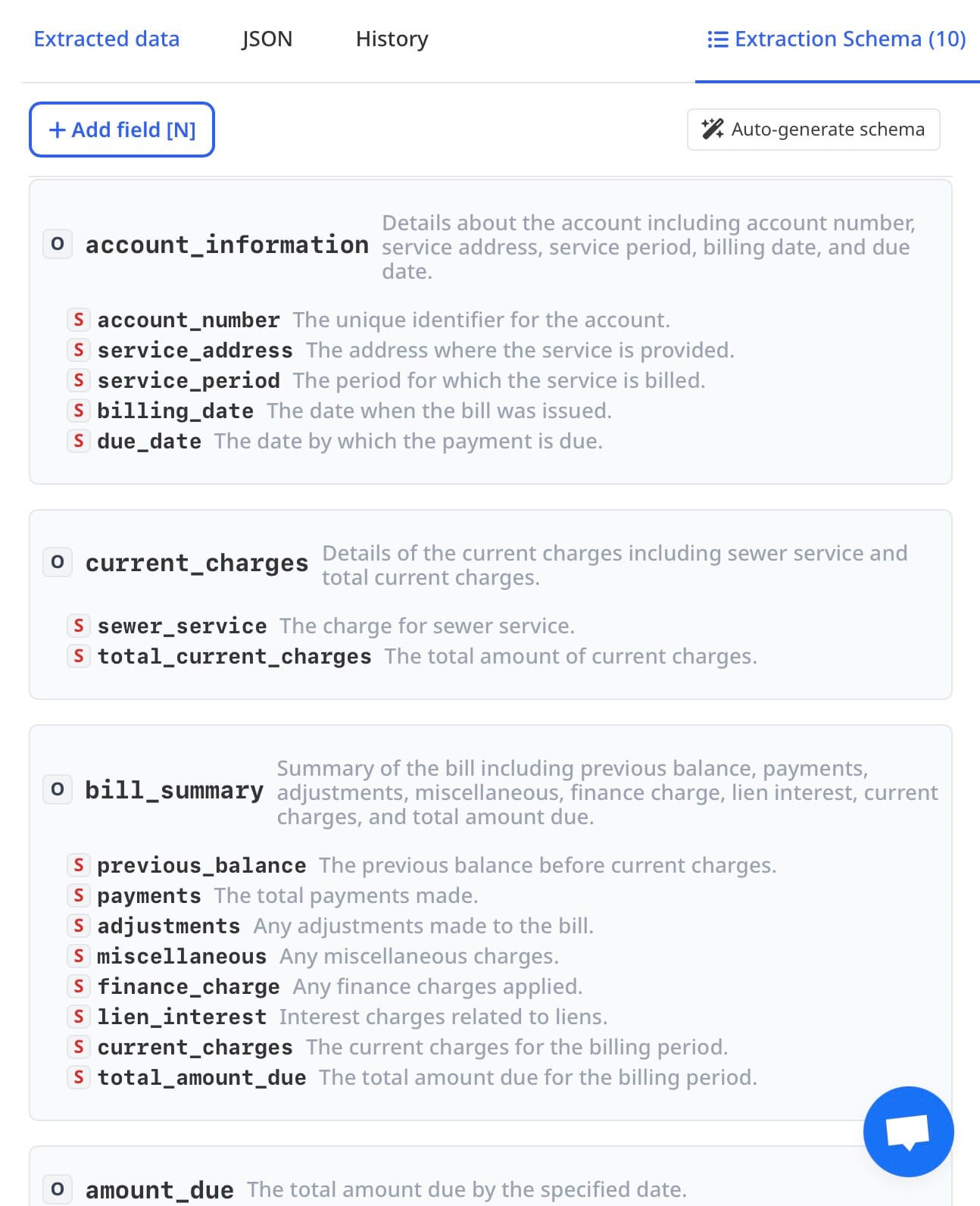How to Use AI to Parse Utility Bills and Extract Structured Data
Learn how to use AI to extract data from utility bills like electricity or internet bills and export it to Google Sheets or Excel automatically with Airparser.

Utility bills are part of daily life. Whether it’s an electricity bill, internet subscription, or water bill, these documents contain important information. They show billing periods, amounts due, consumption, and account details.
But if you manage many of them—like a property manager, accountant, or business owner—entering this data manually can take hours. It’s easy to make mistakes.
The good news is: AI can now do this job for you. In this guide, you’ll learn how to use Airparser, an LLM-powered document parser, to extract structured data from your utility bills.
You don’t need coding skills. You don’t need to build templates. Let’s get started.
What is utility bill parsing?
Utility bill parsing means taking unstructured documents (PDFs, emails, images) and turning them into structured data like rows in a spreadsheet.
For example, you can extract:
- Account number
- Billing period
- Total amount
- Consumption
- Due date
Instead of opening each PDF and copying the data, you can extract all this information automatically.
If you want to learn more about how document parsing works in general, check out What is a PDF Parser and How Can It Help You?

Why use AI for parsing utility bills?
Utility bills come in many formats. Some are neatly structured with tables. Others are scanned images. Some have unclear labels or include ads.
Traditional tools that use templates or fixed OCR rules often fail when the layout changes.
That’s where AI is useful.
Airparser is powered by large language models (LLMs). It has two parsing engines:
- A Text engine, which works well for most bills in digital format
- A Vision engine, which is better for scanned images and more complex layouts
These engines can:
- Understand the meaning behind labels (like “billing period” vs. “service date”)
- Extract information even if the bill layout changes
- Handle both structured and unstructured formats
If you’re curious about how LLMs and OCR work together, read Combining LLMs with Traditional OCR for Document Parsing
What data can you extract from a utility bill?
Here are some common fields you can extract:
- Customer name
- Service address
- Account number
- Billing period (start and end date)
- Bill number or invoice ID
- Utility type (electricity, water, gas, internet, etc.)
- Consumption (e.g., 230 kWh)
- Unit rate (optional)
- Amount due
- Due date
You can extract just a few fields or all of them—whatever you need.
How to parse utility bills using Airparser
Here’s a simple step-by-step guide to help you get started with Airparser.
Step 1: Sign up for Airparser
Go to airparser.com and create a free account. No credit card is needed to get started.
Step 2: Create a new document inbox
Once you’re logged in:
- Click “New Inbox”
- Name your inbox (e.g., “Utility Bills”)
- Choose how you want to upload documents:
- Manual upload (drag & drop PDFs)
- Email-in (forward utility bill emails)
- API (for advanced users)
If your utility provider sends bills by email, the email-in option is easy. Just forward them to your inbox address.
You can learn more in How to Extract Structured Data from Emails and PDFs
Step 3: Upload utility bill documents
Upload a few sample utility bills (PDFs or images). These will help you test and review the extraction process.
If the documents are scanned, Airparser will automatically use its OCR-powered Vision engine to read the text.
Step 4: Create your extraction schema
Instead of writing a prompt, all you need to do is list the fields you want to extract. For example:
- Customer name
- Billing period
- Account number
- Service address
- Utility type
- Usage (kWh or other)
- Total amount due
- Due date

Airparser’s LLM engine understands your field names and figures out the rest. You don’t need to define rules or templates.
Step 5: Review and test
Airparser will extract the data from your uploaded utility bills and display it next to the original document.
You can:
- Check if the extracted values are correct
- Make changes to the schema (add/remove fields)
- Rerun the extraction if needed
This step only takes a few minutes and doesn’t require technical skills.

Step 6: Export your data
Once everything looks good, you can export your data in the format you prefer:
- Google Sheets
- Excel
- CSV
- JSON
- Webhook
- API
You can also set up automatic exports—every time a new bill arrives, Airparser will process it and send the data to your spreadsheet or system.
Want a full guide? Read How to Export PDFs to Google Sheets Automatically
Automate your workflow
You can fully automate your utility bill parsing workflow.
Here’s how:
- Your provider sends a bill by email
- You forward it to your Airparser inbox
- Airparser extracts the data using your schema
- The data is sent to Google Sheets or your accounting tool
You can also connect Airparser with Zapier or Make.com to send data to Slack, Airtable, or anywhere else.
For another automation example, see How to Automate Lead Data Extraction from Emails & Web Forms
Who can benefit from this?
Here are some real-life use cases:
Property managers
Track and manage utility bills for multiple properties without manual data entry.
Small businesses
Stay organized with automated records of electricity, internet, and gas bills.
Accountants
Extract and organize utility expenses for monthly or quarterly reporting.
Fleet or logistics companies
Track fuel, EV charging, or toll bills automatically.
Sustainability teams
Measure energy usage across departments or offices.
Conclusion
Parsing utility bills doesn’t have to be manual. With Airparser’s LLM-powered engine, you can extract data from PDFs, emails, and scanned documents in just a few steps.
There’s no need to build templates or write prompts—just define your fields, upload a few documents, and let the system handle the rest.
Try it out with your next batch of bills and save hours of manual work.





